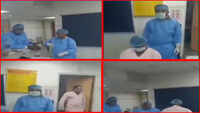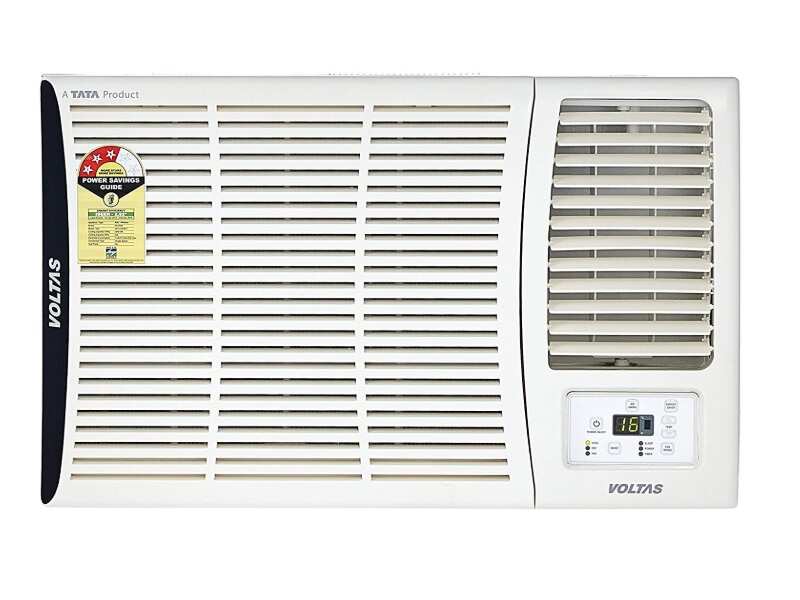
“We have not fired anybody — on the contrary, we’re actually hiring, because we still see demand,” maintains Rajeev Saraf, CEO and founder of Lepton Software, a leader in location analytics and map data with a quarter-century under its belt consulting players in, among other industries, auto, banking & finance, FMCG & retail — and telecom. “I’m glad to say that almost 80% of the networks in India have been launched on maps that we have provided,” he reveals. Early in April, as Indians stayed at home to contain the spread of the novel coronavirus, Lepton was preparing for life post-lockdown. Using Google Maps, it came up with MyCovidRisk, a software that empowers companies by enabling them to proceed cautiously but confidently towards business continuity.
Restart minus risk
At the start, I was thinking, from the point of view of an organisation, ‘What kind of tools will I have when I start opening up my business?’ At an individual level, the government said that you can check on Aarogya Setu whether you are safe or not, but as an organisation how do I know which employees I can call, which customers I can serve, which of my stores can open? For those questions there was no answer, and that was because there was not one single place where I could get all the information on, say, which zone — red, orange or green — an area falls under. Since we’re in the business of mapping, and have been taking mapping data from multiple sources and putting it together, when businesses open, they will need to know where the containment zones are, because they’re the high-risk areas. That’s where the whole idea of MyCovidRisk started, that we need to have some tool which we can provide to employees.
Err on the side of precaution
The onus will be on businesses to make sure they’re complying with the government guidelines and understanding the risks associated with containment zones. One single case on the premises will mean that your business will get locked down — even a one-day loss is a loss to the business. So, it’s important for businesses to ensure that they either don’t provide service to a customer who is in the containment zone or they don’t call anybody to their office from a containment zone. They need to ensure they have all the information.
Continuity with security
If you look at it from a larger perspective, it’s a manageable problem. Delhi is around 1,400 sq/km but if you total all the areas that fall under containment zones, they won’t add up to more than 10 sq/km, maybe less than that. And that’s probably 1% of the total area. So, as a business, you have to plan, and tell yourself, ‘I don’t want to risk 99% of my business by doing something in this 1% area’. And you can still plan for continuity. Businesses also need to take some level of ownership in ensuring that the pandemic doesn’t spread.
Ground zero
When I was in IIT Delhi as a senior research scientist, I was associated with something called TRIPP — the transportation research and injury prevention program, headed by Prof. Dinesh Mohan — and we had done a lot of GIS mapping around Delhi at that time. Initially, I spent some time working with a government agency (DDA) because I thought they would be the biggest user of GIS. Luckily, we got a breakthrough because wireless telecom was just coming in, and one of the core requirements for wireless network planning was digital maps. That’s really where our journey started.
Restart minus risk
At the start, I was thinking, from the point of view of an organisation, ‘What kind of tools will I have when I start opening up my business?’ At an individual level, the government said that you can check on Aarogya Setu whether you are safe or not, but as an organisation how do I know which employees I can call, which customers I can serve, which of my stores can open? For those questions there was no answer, and that was because there was not one single place where I could get all the information on, say, which zone — red, orange or green — an area falls under. Since we’re in the business of mapping, and have been taking mapping data from multiple sources and putting it together, when businesses open, they will need to know where the containment zones are, because they’re the high-risk areas. That’s where the whole idea of MyCovidRisk started, that we need to have some tool which we can provide to employees.
Err on the side of precaution
The onus will be on businesses to make sure they’re complying with the government guidelines and understanding the risks associated with containment zones. One single case on the premises will mean that your business will get locked down — even a one-day loss is a loss to the business. So, it’s important for businesses to ensure that they either don’t provide service to a customer who is in the containment zone or they don’t call anybody to their office from a containment zone. They need to ensure they have all the information.
Continuity with security
If you look at it from a larger perspective, it’s a manageable problem. Delhi is around 1,400 sq/km but if you total all the areas that fall under containment zones, they won’t add up to more than 10 sq/km, maybe less than that. And that’s probably 1% of the total area. So, as a business, you have to plan, and tell yourself, ‘I don’t want to risk 99% of my business by doing something in this 1% area’. And you can still plan for continuity. Businesses also need to take some level of ownership in ensuring that the pandemic doesn’t spread.
Ground zero
When I was in IIT Delhi as a senior research scientist, I was associated with something called TRIPP — the transportation research and injury prevention program, headed by Prof. Dinesh Mohan — and we had done a lot of GIS mapping around Delhi at that time. Initially, I spent some time working with a government agency (DDA) because I thought they would be the biggest user of GIS. Luckily, we got a breakthrough because wireless telecom was just coming in, and one of the core requirements for wireless network planning was digital maps. That’s really where our journey started.

Coronavirus outbreak
Trending Topics
LATEST VIDEOS
More from TOI
Navbharat Times
Featured Today in Travel
Quick Links
Kerala Coronavirus Helpline NumberHaryana Coronavirus Helpline NumberUP Coronavirus Helpline NumberBareilly NewsBhopal NewsCoronavirus in DelhiCoronavirus in HyderabadCoronavirus in IndiaCoronavirus symptomsCoronavirusRajasthan Coronavirus Helpline NumberAditya ThackerayShiv SenaFire in MumbaiAP Coronavirus Helpline NumberArvind KejriwalJammu Kashmir Coronavirus Helpline NumberSrinagar encounter
Get the app







